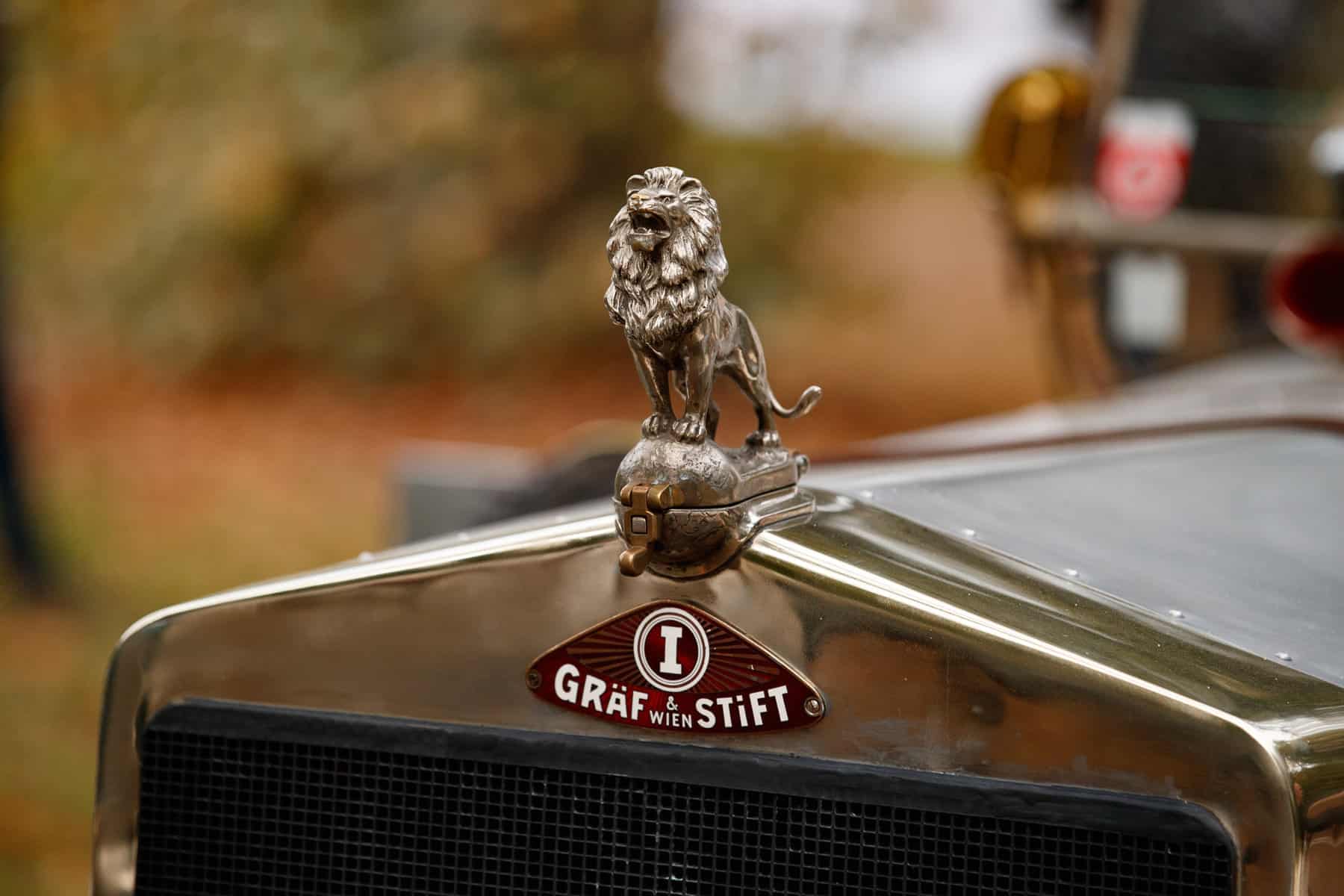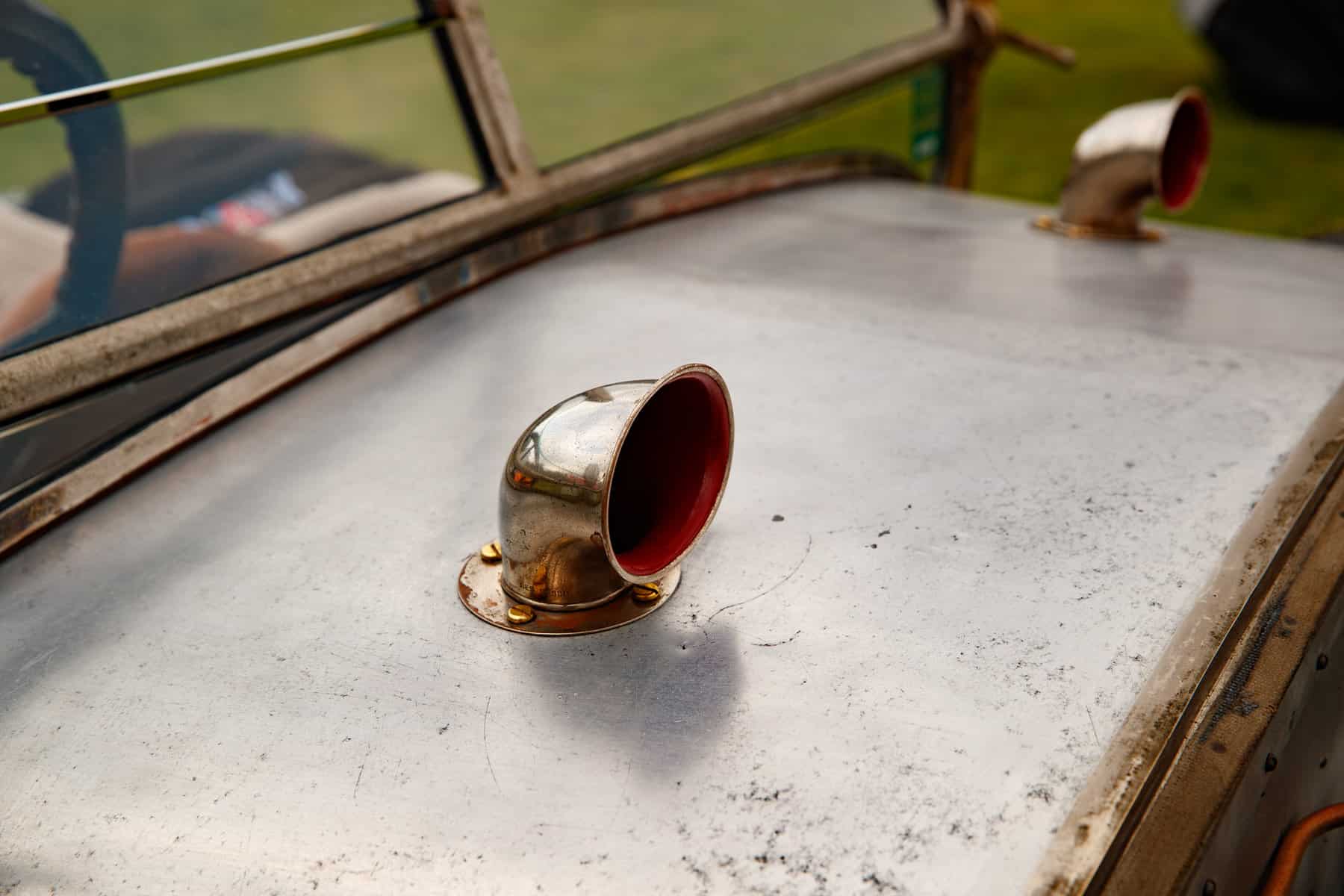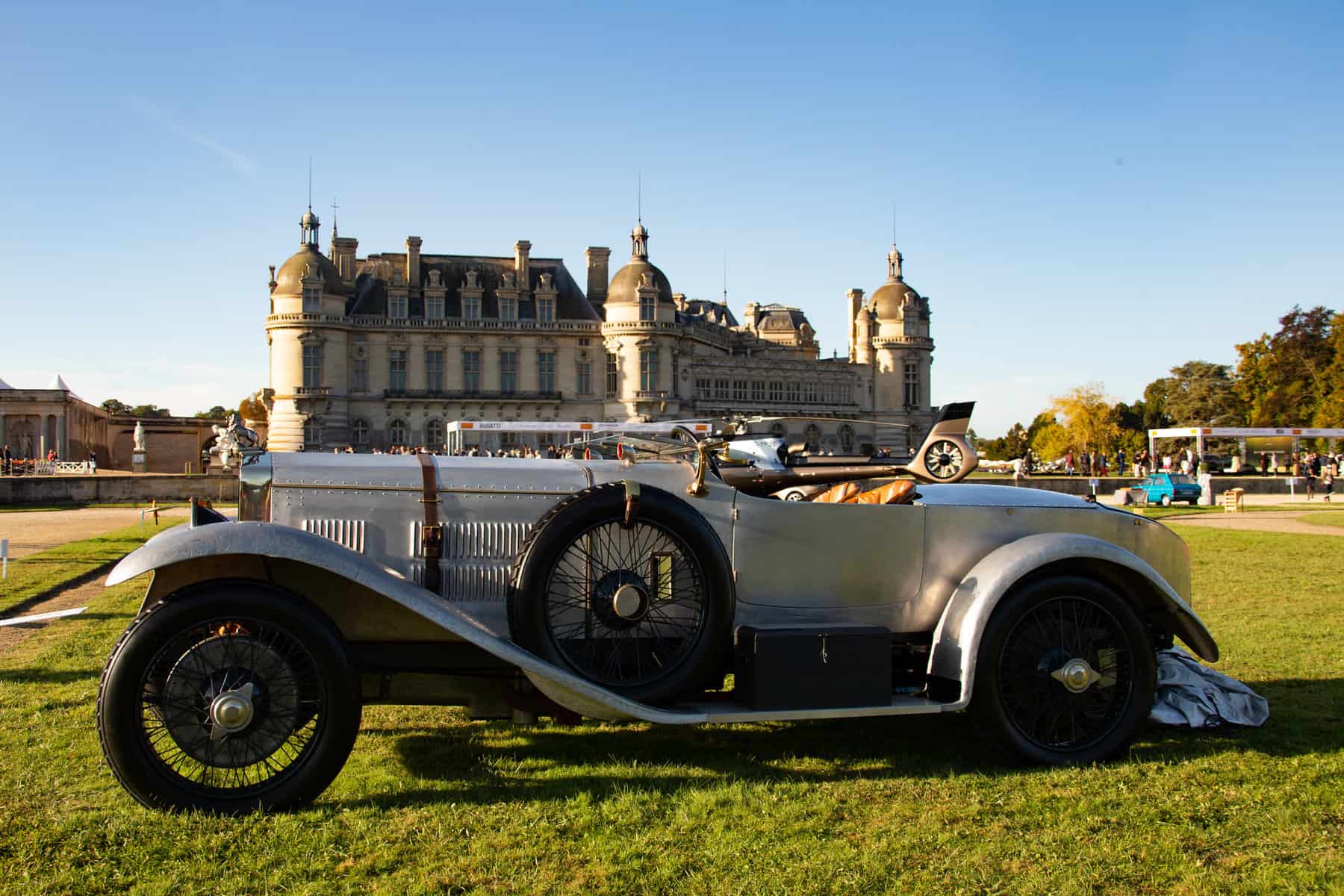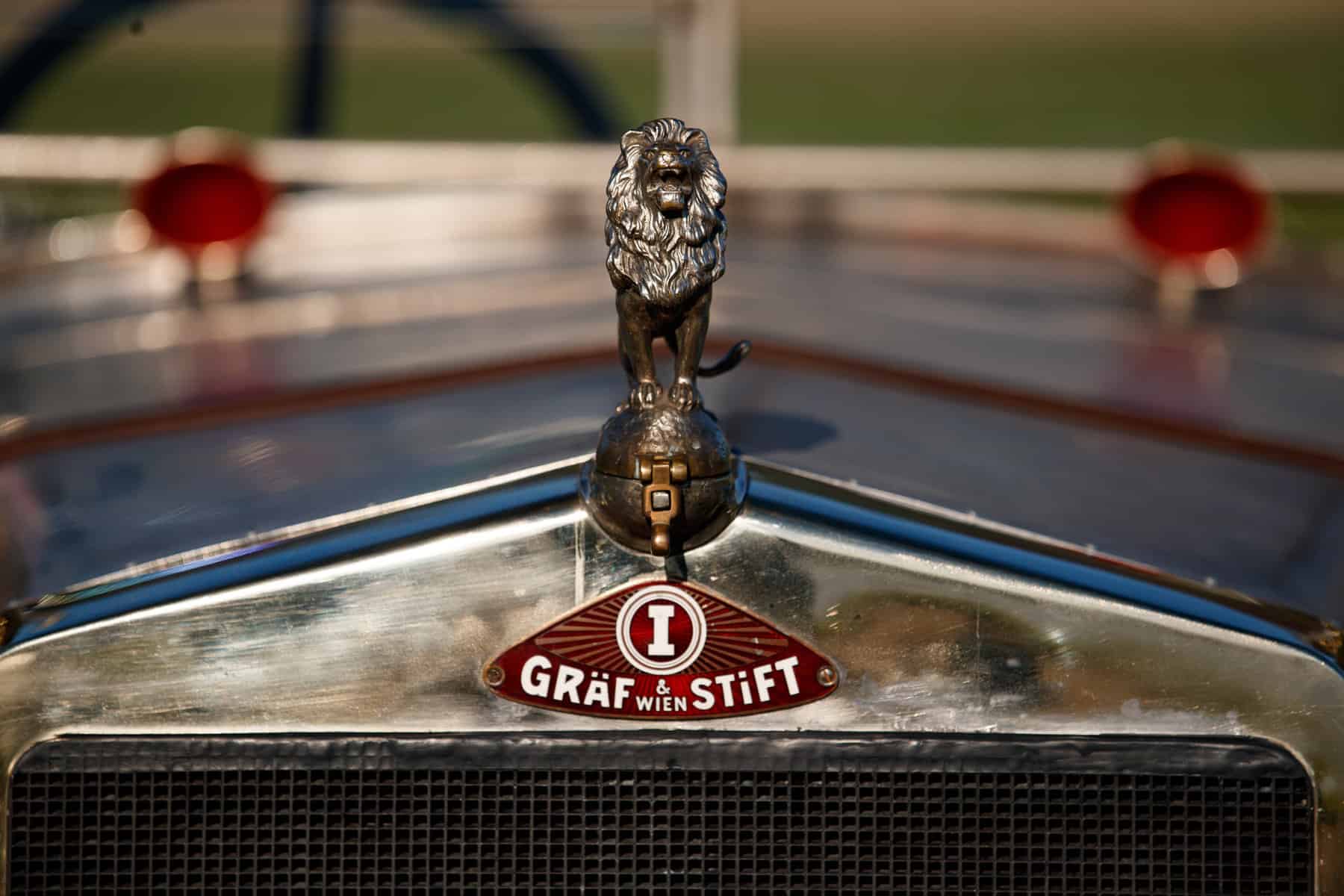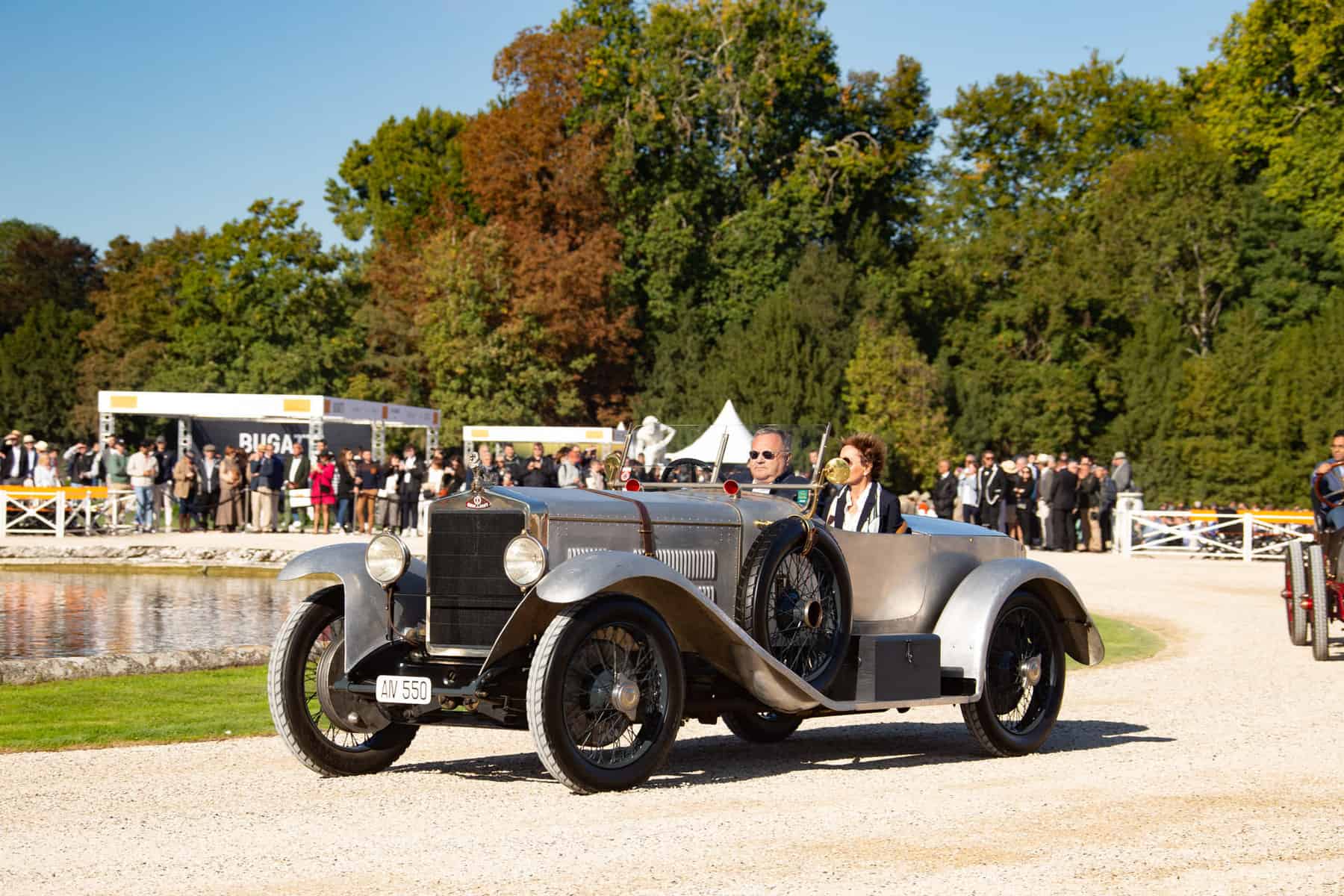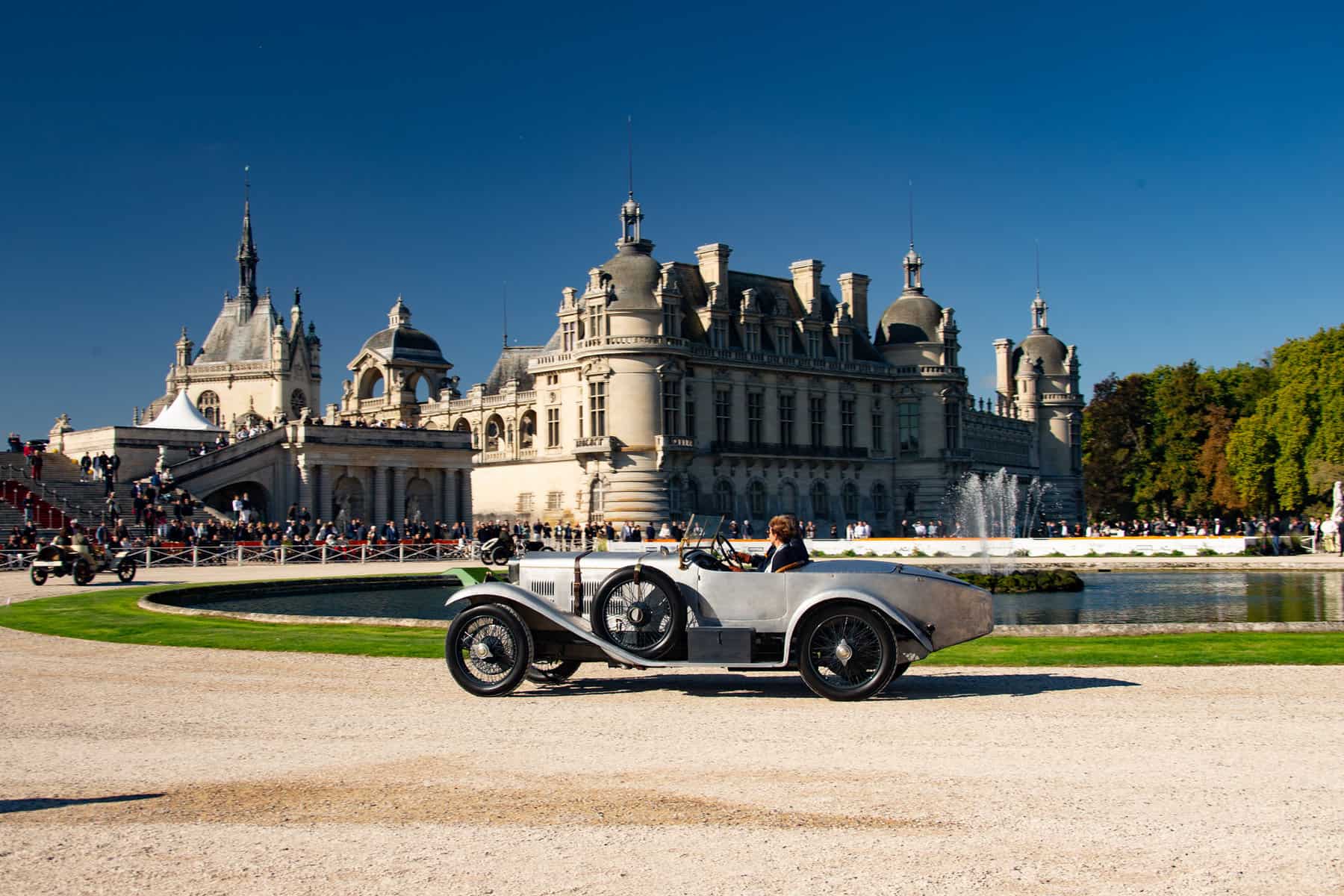Gräf & Stift SR4 sp.
A rare and very special piece of automobile history
WORDS & IMAGES BY: WOUTER MELISSEN
We are very fortunate that Rudolf Gräf stepped in when German commercial vehicle manufacturer MAN decided to have one of the company’s Vienna factories torn down to make room for a residential project. Gräf was the last member of his family still working at the factory, which had once produced the Gräf & Stift automobiles.
He knew that there were three of these cars hidden away in the attic of the factory. Among them was the one-off competition car featured here. It was produced in 1925 but for a variety of reasons stored shortly thereafter in what was effectively brand-new condition.
Although the company would eventually produce luxury cars that were fit for a king, founding brothers Franz, Heinrich, and Karl Gräf started out repairing and then manufacturing bicycles during the 1890s. The ambitious brothers then turned to automobiles and developed a small de Dion–powered vehicle that could very well have been the first ever front-wheel-drive car. Only two of these early cars was produced and, quite amazingly, one has survived. The potential of the brothers was recognized by investor Wilhelm Stift and together they formed Gräf & Stift in 1904. Their first venture was producing Spitz cars under license, but when that company moved production to Hungary, Gräf & Stift started producing cars under their own name from 1904 onward.
The newly established manufacturer targeted the very top of the market with advanced and luxurious cars that were particularly well liked by the Austrian aristocracy, including the Vienna court. Among the customers was Count Franz von Harrach, who owned a four-cylinder engined “Bois de Boulogne” model. Riding in this very car through Sarajevo with his wife and Harrach, Count Franz Ferdinand was assassinated by Gavrilo Princip, setting off a string of events that would lead to the outbreak of the Great War. Kaiser Karl of Austria also used a Gräf & Stift from 1914, which is now commonly referred to the as the “Kaiserwagen.” Just like the original Gräf prototype, both these historically significant cars still exist today.
After the Armistice, road-car production resumed at the “Weinberggasse“ factory in Vienna. The second generation of the Gräf family had also joined the business, which included Josef, who was Karl’s son, and Rudolf, who was Heinrich’s son. It was Josef Gräf and his racing ambitions that initiated the development of this car. He started competing with his family’s cars in 1923 and was quickly joined by others, including wealthy beer brewer Josef Sigl. There was some success in 1923 but the 1924 season was disappointing. To regain momentum, a brand-new car was developed for the following year. It was designed specifically to compete in the 1925 edition of the “Semmering Bergrennen.”
With purpose-built tracks nonexistent during this period in continental Europe, public roads were used for racing. Some races were held on circuits over several laps but in more undulating areas like Austria, hill climbs were particularly popular. Among the most famous and prestigious of these in Central Europe was the Semmering Bergrennen. This used a ten-kilometer road starting at Schottwien in the valley running up to the Semmering mountain pass. Over the tight and twisty course there were elevation changes of 450 meters. The first edition, held in 1899, saw the motorcycle class won by Arnold Spitz, whose cars Gräf & Stift would briefly build under license.
The new 1925 Gräf & Stift Hill Climb Special was a mix of the SR3 chassis with a tuned engine from the upcoming SR4 model. To make it more suitable to the tight course, the chassis was shortened to 3,210 mm. The steel ladder frame was slightly raised on both ends allowing the axles to be raised and with it the ride height to be lowered. The front and rear suspension consisted of semi-elliptic leaf springs and friction dampers. The front dampers were mounted transversely and bolted directly onto the front axle and cross-member. Large drum brakes were fitted on all four corners. These were operated by levers and rods.
Appropriately known as the SR4 sp., for Special, the competition car was powered by the latest version of the company’s proprietary straight-six engine. Due to limitations in the casting methods of the time, it was built up of two blocks of three cylinders, which were bolted onto a common crankcase. The crankshaft itself was supported by ten main bearings. A laterally mounted camshaft actuated the overhead valves through pushrods and rockers. The massive engine displaced 7,790 cc and breathing through a pair of Zenith carburetors produced around 120 horsepower. A standard four-speed gearbox was fitted but Josef Gräf did have a rear axle from a truck fitted. With its lower ratio, it aided acceleration out of the corners.
Unique to this car was the two-door, four-seater, aluminum body. It was very narrow, which was further accentuated by the broad fenders and running boards. The nose was dominated by a tall radiator on top of which perched the Gräf & Stift lion mascot. This was inspired by the two lions on the Schemerl bridge in Vienna, which had been sculpted by the artist Rudolf Weyr. The large front fenders were beautifully sculpted. Other nice details are two small periscopes mounted behind the engine cover, intended to feed fresh air into the passenger compartment. In the one period picture extant of this car, the body was still unpainted, and the car was fitted Vienna plates “AIV 550,” which was a temporary registration issued for testing.
According to the factory records, the SR4 sp. was ready in April 1925. Sadly, it could not be pressed into service, as the 1925 edition of the Semmering Bergrennen was cancelled due to the organizers running out of funds. A rule change for 1926, with a reduced maximum displacement, sealed the fate of chassis 2909. Shortly thereafter, the car was stored in the attic of the factory, where it would remain for more than fifty years. The gentleman seen driving the car in the one period picture is prominent customer Josef Sigl. He was suitably impressed and ordered a similar car. He would go to race this car, chassis 2907, from 1926 until his untimely death in 1928 as a result of a hunting accident. His 1925 competition car was not seen again.
For the 1926 season, at least two new cars were built. They were lower still and featured an all-new, 5.0-liter, six-cylinder engine. Despite the reduction in size the new design could produce as much as 180 horsepower running on three carburetors. The two cars were raced extensively by Josef Gräf and Fritz von Zsolnay. The biggest success came in 1927 when von Zsolnay scored a victory in the Semmering hill-climb. He did have to share the win with Mercedes-Benz driver “Berger,” who had set the exact same time to the tenth. Unfortunately, neither these 1926 cars nor any of the earlier Gräf & Stift racers survived.
The Austrian manufacturer would continue producing motor cars until 1938. The final models included the one-off V12-engined C12. With another world war looming, there was little demand for luxury cars. Gräf & Stift instead focused on commercial vehicles like truck and trolleybuses after the Second World War. Still owned and operated by the Gräf family, the company merged with Österreichische Automobil Fabriks-AG in 1971. The newly formed ÖAF-Gräf & Stift AG was acquired by MAN shortly thereafter. Thanks to their strong reputation, the Gräf & Stift name was used for another thirty years for the trolleybuses produced in Vienna. To this day, MAN has a strong presence in the Austrian capital.
Shortly after the SR4 sp. finally emerged from hiding, it was sold to Austrian Karl Marschhofer. Between 1979 and 2019, he did extensive research, assembled a large variety of small parts, and had a new radiator made, but in the end, did not commit to a full-fledged restoration. Late in 2019, the car was sold to fellow Austrian Johannes Zieser. After making an extensive inventory of the parts, he discovered that the car was pretty much complete with the main missing parts including the windshield, some floorboards, and the interior. With the car not pressed into action in period, it could very well be that an interior had never been fitted. Josef Sigl’s son, who was in the back of the car with his father during the test drive, remembers that he sat on a blanket.
“In January 2020, we started restoring the car from the ground up in Andreas Fojtik’s car workshop in Korneuburg,” Zieser explains. “Much of the work was more like intensive but careful cleaning rather than restoration; many components were intact and unused. Karl’s radiator, which had already been reproduced in the 1980s, and the sheetmetal of the bonnet were joined and riveted. The ash wood frame was exceptionally intact, after cleaning with soapy water it was painted over once with linseed oil paint. The aluminum body was gently smoothed out by Philipp Fojtik, and we left all the traces of machining by the tinsmiths of the time and the scars of a whole century in their unadulterated beauty.”
“We were incredibly lucky with a windscreen we bought in Marieholm, Sweden. This was salvaged from the attic of their fire station by the men from the local fire brigade association in February 2020 and was offered for sale on the Internet. It came from an Austro-Daimler fire engine from the 1920s and fitted into the drill holes of our body with millimeter precision.” Zieser continues: “Numerous small parts that were no longer available were designed and reproduced after meticulous research, like the spare wheel holders, the Kracherl mechanism, some cable routing tubes, the toolboxes, or the central quick-release fasteners. We even had the original license plates from 1925 reproduced.”
Zieser continues: “Driving the almost hundred-year-old automobile is a real challenge; double clutching and declutching need to be learned. But then, with the proud lion on the huge bonnet in front of you, you get an unbelievable sense of elation, because you are driving a piece of Austrian cultural history. The Gräf & Stift SR4 sp. No. 2909 is the only surviving works racing sports car from the Weinberggasse company. It thus joins the few surviving testimonies of their engineering skills in passenger car construction such as the Kaiserwagen, Sarajevo, or Schuschnigg cars.”
Once the restoration was complete, the Gräf & Stift SR4 sp. was invited to the Concorso d’Eleganza Villa d’Este in 2021 and to the Chantilly Arts & Elegance Richard Mille the following year. Of the circa 2,000 cars built between 1901 and 1938, around two dozen examples remain of this important but, especially outside of Austria, largely forgotten manufacturer. Restored to full running order, the SR4 sp. remains as a very tangible exponent of the cars built on the Weinberggasse. Thanks to the combined efforts of Rudolf Gräf, Karl Marschhofer, and Johannes Zieser, we can still get the opportunity to experience this very rare piece of history.

